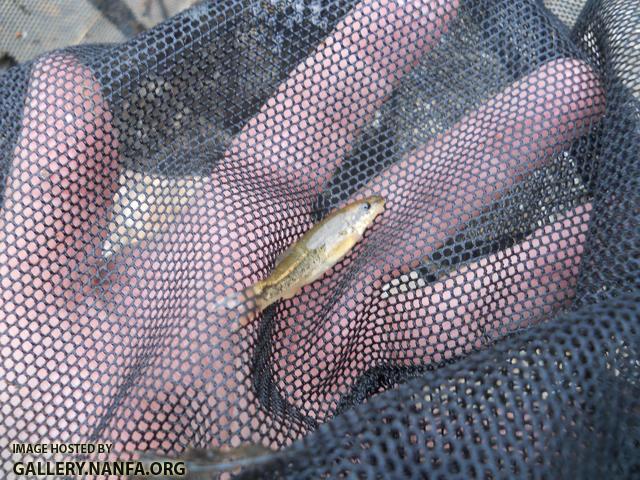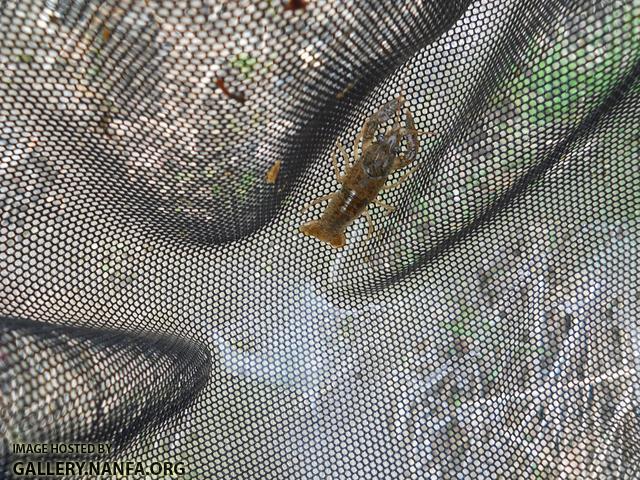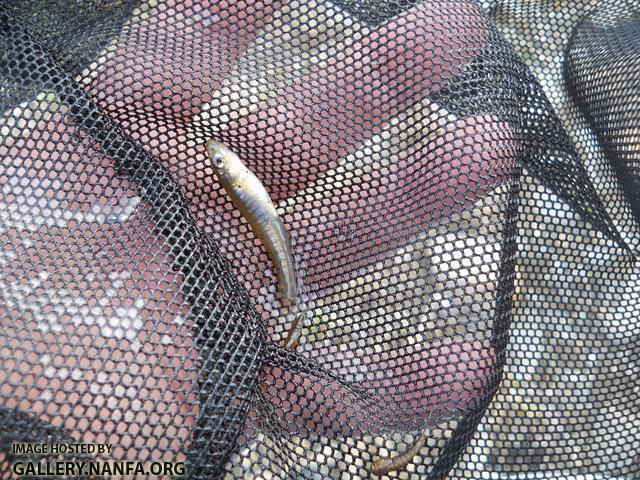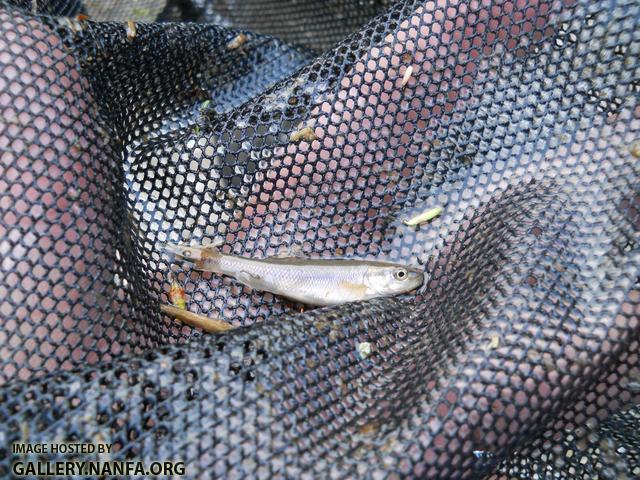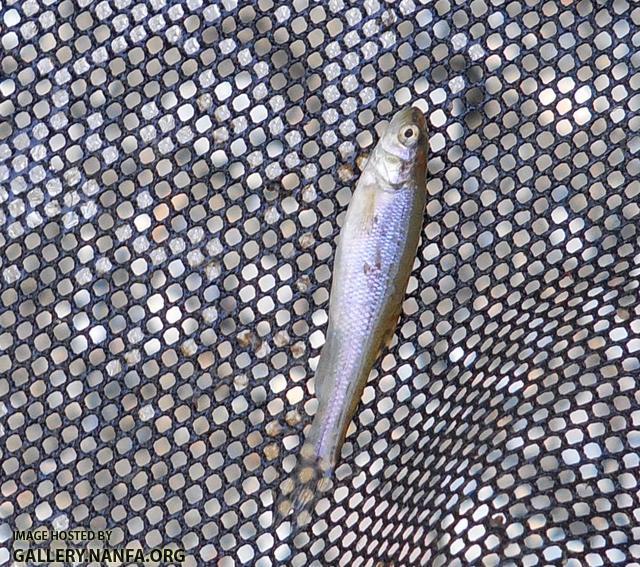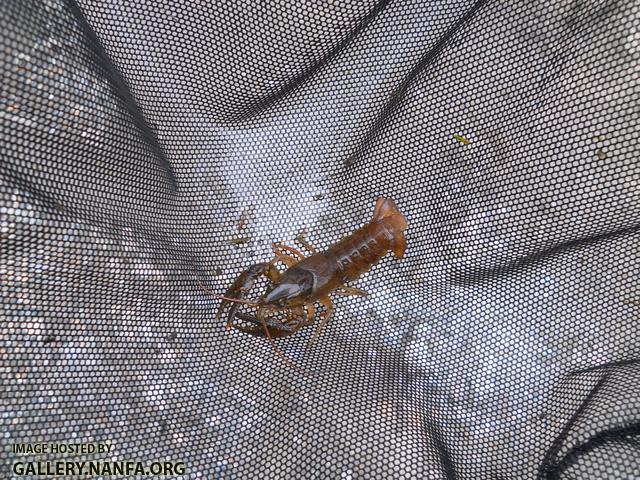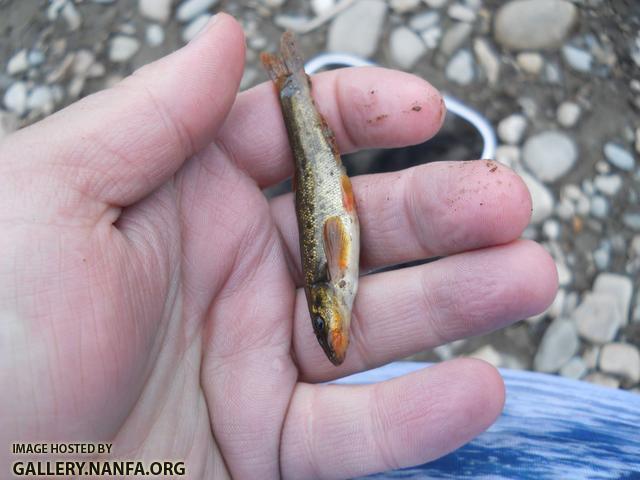The water level in the old river was low. The river bottom was mainly smaller rocks perfect for kick netting. This spot wasn't very far from where it met the connecticut (up the side road a bit from the main highway, the rivers met a little past the main highway).
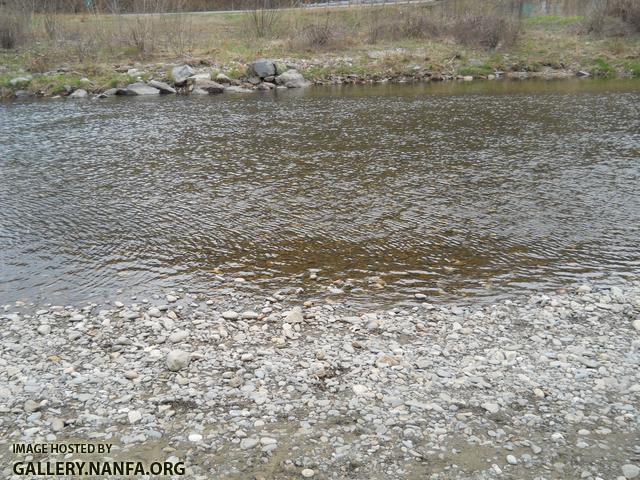
I crossed the river which started as cool but got colder heading towards the other side (but also had warm sections oddly). In face the mix of temperatures in different areas of the river and the mix of habitats many left behind by lowering water levels likely are what made this location so diverse.
In the rocky run shown in this picture I got my first fish. A white sucker.

A bit further down a gravel bar split the river into two small fast riffles.
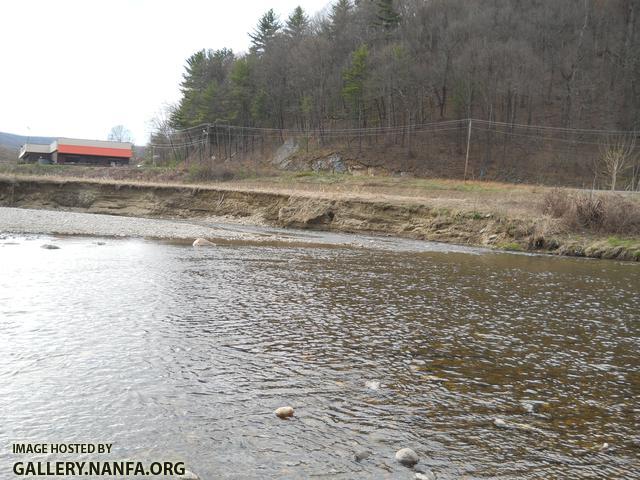
The picture fails to show how much it narrows on the other side a bit further down. Sampling just before the riffles I got two tesselated darters. I took a picture of the first one.
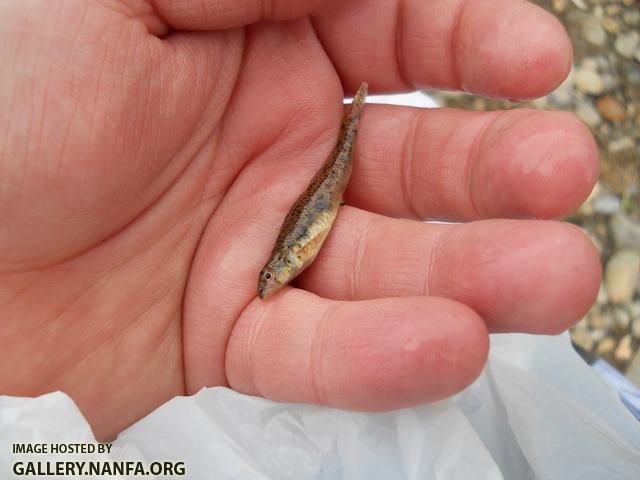
Heading into the right hand riffle I was surprised my first catch had legs, a small salamander.
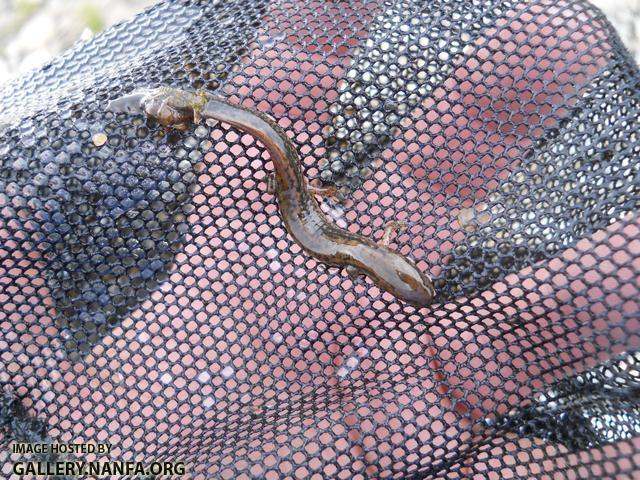
I then headed over to the left hand branch with no luck as I followed it a ways down, so I went back to the right and saw some fish fleeing, I netted one. A small blacknose dace. It looks like a young one but it seems too early for their to be young of the year.
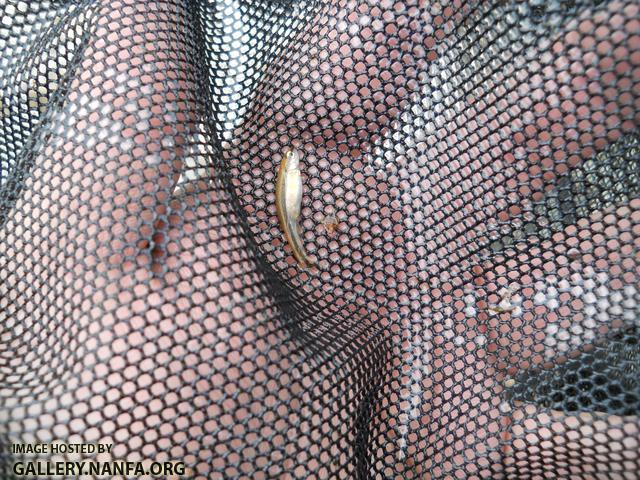
From this point I started working my way back upstream on the left side.


